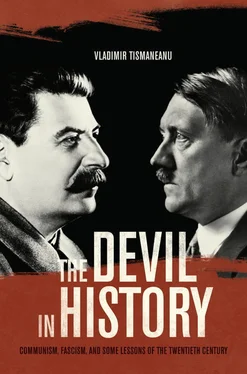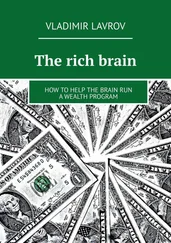In May 1952 the Romanian media announced the elimination of three members of the Politburo, two of whom had been the leaders of the party’s Moscow émigré center during World War II. All three had been party secretaries and had shared absolute power with the leader of the domestic faction, Gheorghe Gheorghiu-Dej. Ana Pauker, a veteran Communist leader who long had been lionized by international propaganda as an impeccable Communist fighter, lost her job as minister of foreign affairs and was put under house arrest. Her Muscovite ally, the Hungarian-born Vasile Luca, was accused of economic sabotage during his tenure as minister of finance and of collaboration with the bourgeois police during the party’s underground activity. Luca was arrested and died in prison in the early 1960s. The third member of the group, Teohari Georgescu, a home Communist and former minister of internal affairs whose principal fault consisted in his close association with the Pauker-Luca faction, was also jailed but soon released, though never reinstated in party positions. The Romanian case is a perfect example of country dynamics determined by party factionalism and sectarianism. It can be said that the more marginal and less historically representative a Communist party was, the more profound its sectarianism was. The Romanian Communist Party (RCP), torn apart by internal struggles among its three centers 87during the underground period, preserved a besieged fortress mentality even after World War II. Given that in the pre-1945 period mutual accusations had usually resulted in the expulsion of the members of the defeated faction, once the party was in power, the effects of the continued struggles were catastrophic. Once established as a ruling party, the RCP projected a vision based on exclusiveness, fierce dogmatism, and universal suspicion at the national level.
The mystique of the party called for complete abrogation of its members’ critical faculties. As Franz Borkenau put it, Communism, “a Utopia based upon the belief in the omnipotence of the ‘vanguard,’ cannot live without a scapegoat, and the procedures applied to detect them, invent them, become only more cruel and reckless.” 88For all practical purposes, the political history of the international Communist movement is the history of continual purges of different factions branded by the victors as “anti-party deviations.” Those defeated in party power struggles were labeled factionalists, whereas the winners were lionized as champions of the “holy cause” of party unity.
Whereas the Slánský trial and the “doctor’s plot” seem to represent the limits of the Stalinist system’s irrationality, the purge of the Pauker-Luca-Georgescu group is primarily an expression of domestic revolutionary pragmatism. This process involved massive purges of the Jewish Democratic Committee and the Hungarian Committee, suggesting a concerted campaign of weakening the Moscow faction. In the Byzantine schemes that devoured the Romanian Communist elite, the mystical internationalism of the Comintern period was gradually replaced by a cynical position embellished with nationalist, even xenophobic, motifs. Gheorghiu-Dej and his acolytes not only speculated about Stalin’s anti-Semitism but did not hesitate to play the same card. 89The stakes were absolute power, and the Jewishness of rivals was an argument that could be used with the Soviet dictator. If the national Stalinists were the prime beneficiaries of Stalin’s warning not to transform the party from a “social and class party into a race party,” 90they were neither its initiators nor its architects. No less caught up in the same perverse mechanism of self-humiliation than their Polish and Hungarian colleagues, the Romanian Stalinists—Gheorghiu-Dej, Chișinevschi, and Ceaușescu as much as Ana Pauker and Vasile Luca—were willing perpetrators of Stalin’s designs. They were allowed by the Soviet dictator to gain autonomy not from the center but from another generation of the center’s agents. It was indeed a sort of moment of emancipation, but one that signaled Moscow’s sanctioning of the coming of age of a new Stalinist elite in Romania. The history of the Stalinist ruling group in other East-Central European countries is strikingly similar. There is the same sense of political predestination, the same lack of interest in national values, the same obsequiousness vis-à-vis the Kremlin.
An indicator of the continuous Stalinist nature of the Romanian regime, of its permanent purge mentalité , is Leonte Răutu’s fateful longevity in the highest power echelons as the high priest of a cultural revolution à la roumaine. 91A prominent party veteran of Bessarabian-Jewish origin, perfectly fluent in Russian, he was the architect of anticultural politics of Stalinism in Romania. Until his removal from the Political Executive Committee in the summer of 1981, he epitomized a perinde ac cadaver commitment to the Marxist-Leninist cause. He was the most significant figure of the “party intellectuals,” who produced, reproduced and instrumentalized ideological orthodoxy. A professional survivor prone to the most surreal dialectical acrobatics, Leonte Răutu adjusted and took advantage of the regime’s gradual systemic degeneration, making a successful transition from professional revolutionary to cunning and slippery bureaucrat always ready to hunt down heretics among party ranks and within society as whole. Born in 1910, Răutu joined the RCP in 1929 (while a student in mathematics at Bucharest University) and in the 1930s became head of the propaganda and agitation department. In Doftana Prison he came in contact with Gheorghiu-Dej and Nicolae Ceaușescu. In the following years he became the editor of Scînteia , the party’s illegal newspaper. In 1940 he left Romania and took refuge in the USSR, becoming the director of the Romanian section of Radio Moscow. He returned to the country with Ana Pauker, Vasile Luca, and Valter Roman, and initiated a domestic version of Zhdanovism. In one of his most vehemently Zhdanovite speeches, “Against Cosmopolitanism and Objectivism in Social Sciences,” 92Răutu declared war on everything that was worthy in the national culture: “The channels by which cosmopolitan views become pervasive, especially among intellectuals, are well known: servility to and kowtowing to bourgeois culture, the empty talk of the so-called community of progressive scientists and the representatives of reactionary, bourgeois science, national nihilism, meaning the negation of all that is valuable and progressive for each people in his culture and history, the contempt for the people’s language, hatred of the building of socialism, the defamation of all that is new and developing, replacing the partiinost with bourgeois objectivism, which ignores the fundamental difference between socialist, progressivist culture and bourgeois, reactionary culture.” 93
After 1953, he pursued a seemingly more balanced approach, as a defense mechanism in the context of de-Stalinization. His main weapon in these changing times was that of manipulation. The individual was always a tool with no distinct personality (rather being a complex of acquired or ascribed features); when s/he displayed the will for autonomous action, s/he became a victim of the diabolical logic of the purge (an excellent example is the career of Mihai Beniuc, the “little tyrant from the Writers’ Union,” as veteran Communist poet Miron Radu Paraschivescu once called him). Răutu’s cynicism and opportunism were flagrant in 1964, when the same individual who had directed the Sovietization of Romanian culture initiated a strident campaign against academia, which he unmasked and accused of “having forgotten true national values” and of “shamelessly showing fealty to even the slightest Soviet achievement.” Leonte Răutu’s career was fundamentally characterized by an extraordinary capacity for siding with those in power within the RCP. He first became a favorite of Ana Pauker and Vasile Luca, obtaining his position at Radio Moscow and his initial nominations in Romania because of this connection. By 1952, he jumped into Dej’s boat, being, along with Miron Constantinescu, the author of the May-June Plenary Session resolution, the text on which the purge proceedings were based (what came to be known as “the June nights”). His inquisitorial contribution to the Pauker case was not the first (see his involvement in unmasking Pătrășcanu’s intellectual “crimes”) and wouldn’t be the last such activity. In 1957, he was again on the prosecutor’s bench during the party action against Chișinevschi-Constantinescu (these events are often labeled in Romanian historiography “a failed de-Stalinization”). After the downfall of these two, who had been direct competitors in the struggle to administer the cultural front, Răutu became the unchallenged patriarch of the Communist politics of culture. With the exception of the period when he shared power with Grigore Preoteasa, Răutu created an apparatus manned by mediocre individuals, whose ego equaled their incompetence (e.g., Mihail Roller and Pavel Țugui). The biography of Leonte Răutu is the perfect expression of the perverse game of Stalinist masks. Dissimulation, ethical promiscuity, and hypocrisy were the only constants of the apparatchik’s existence, a full-blown retreat from any moral imperative. Răutu was the incarnation of the diabolical antilogic of Stalinism: an individual experiencing an irresistible process of personal decline based upon unswerving subordination to the party leader beyond considerations such as reason, honor, and dignity.
Читать дальше












